High blood sugar can cause a wide variety of health issues like extreme fatigue, heart problems, and more. The most common reason people have high blood sugar is from diabetes when the body is unable to produce enough insulin (1). For diabetes, focus on a low Glycemic Index (GI) diet to keep your blood sugar levels down.
That means you’ll need to avoid certain food groups like refined carbohydrates, excess sugar, and sweetened beverages like soda. They’re known to cause excessive blood sugar spikes (2).
Table of Contents
Foods that Lower Blood Sugar
There are some foods you can add to your diet to make sure you keep your blood sugar low. Get started with these simple foods to add to your routine.
1. Berries
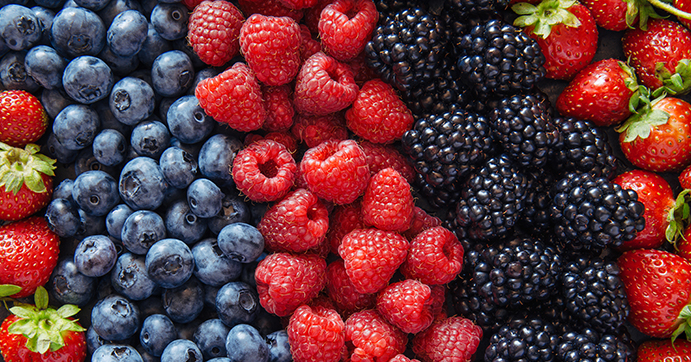
Berries like blackberries, blueberries, and strawberries are among some of the healthiest foods to consume for several reasons. They are the best go-to fruits for those who need to lower their blood sugar because they contain Anthocyanins, a powerful flavonoid that gives berries their rich colors (3, 4). One study done by the National Institutes of Health (5) found that berries significantly lowered blood glucose and lipid profiles of participants affected by high blood sugar.
The best part is that berries are one of the easiest foods to add to your everyday diet. Try to add your favorite berries to smoothies, oatmeal, cereal, and yogurt. Choose a variety of berries to get the benefits from all different types of flavonoids (6). A great way to make sure your berries aren’t going to go bad, especially if they’re organic, is to freeze them or buy them frozen already. This way, they make a great addition to smoothies as they also are used as ice.
Summary: Berries contain a powerful flavonoid called Anthocyanins, which have been shown to significantly lower blood glucose and lipid profiles in patients with high blood sugar. They are easy to add to smoothies, oatmeal, cereal, and yogurt, or simply eaten alone as a snack.
2. Many Nuts and Seeds
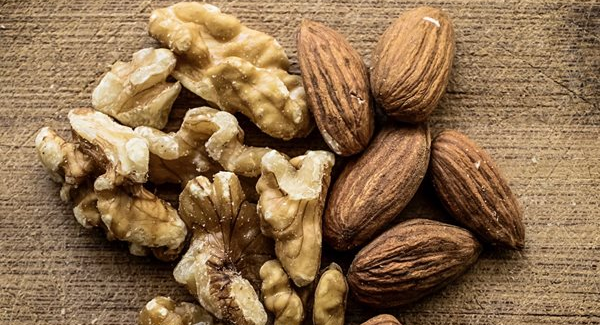
Nuts and seeds are an extremely nutritious, protein-rich addition to a healthy diet (7). Nuts and seeds that are known to lower blood sugar include almonds, chia seeds, pine nuts (8), brazil nuts, and more. Brazil nuts are also rich in selenium, an essential nutrient to maintain normal hormone levels (9, 10). Simply add in only three brazil nuts to your diet a day to get an adequate amount of selenium.
Almonds are another powerful antioxidant that can be added to a complete diet (11). A study showed that when given a test meal with almonds, participants were found to have lower glycemic levels and insulin (12). Plus, the study also showed that it helped to decrease hunger and even the desire to eat by keeping the participants full longer.
Summary: Nuts and seeds, such as almonds, chia seeds, pine nuts, and brazil nuts, are known to lower blood sugar levels. Almonds are especially high in antioxidants and nutrients that can help lower glycemic and insulin levels, and increase satiety which helps to reduce snacking.
3. Whole Grains
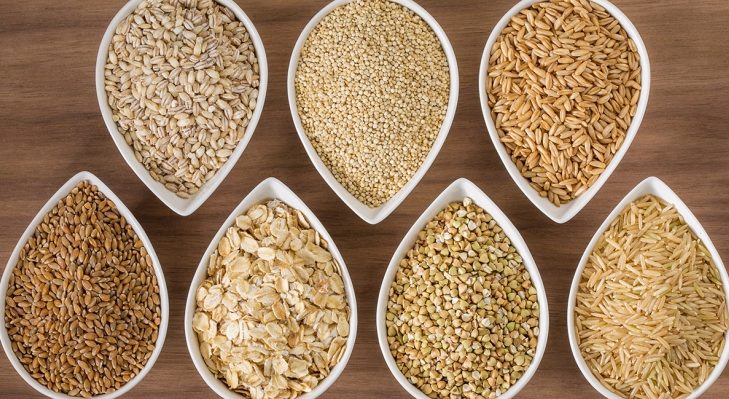
It’s important to get enough fiber when dealing with diabetes management (13). Therefore, whole grains are an ideal choice for those with high blood glucose (14). Try to always swap out white bread and white rice, and instead add in whole-grain varieties. With a multitude of options out there, there’s sure to be something you can enjoy.
Try to add in whole grains for breakfast if you enjoy a bowl of oatmeal or homemade pancakes. You can mix in your favorite berries to both of these for a hearty, nutritious breakfast to manage your blood glucose.
Summary: Fiber is essential when dealing with diabetes or high blood sugar. Eating adequate amounts of fiber helps to lower blood glucose levels. You can boost daily fiber intake by swapping out refined grains (white bread, pasta, rice) with whole grains (whole wheat bread, quinoa, oats).
4. Leafy Greens
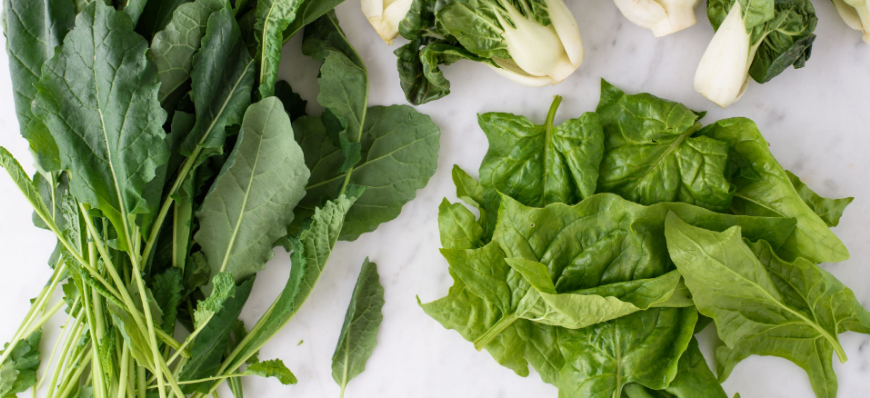
Kale, spinach, swiss chard, lettuce, collard greens, and more can help to regulate blood sugar levels (15, 16). A study found that including different types of these and more vegetables cut the risk of type 2 diabetes by 14% (17).
You can add in leafy greens to all your favorite meals without a problem. Make some kale chips in the oven by simply adding your favorite spices along with olive oil and bake them in the oven at 350 degrees for 10 minutes.
Summary: By incorporating leafy greens into your diet, one study indicates you can cut your risk of developing type 2 diabetes by 14%. Add a few servings of kale, spinach, swiss chard, lettuce, collard greens, and much more to your diet to help maintain low blood sugar levels.
5. Avocado
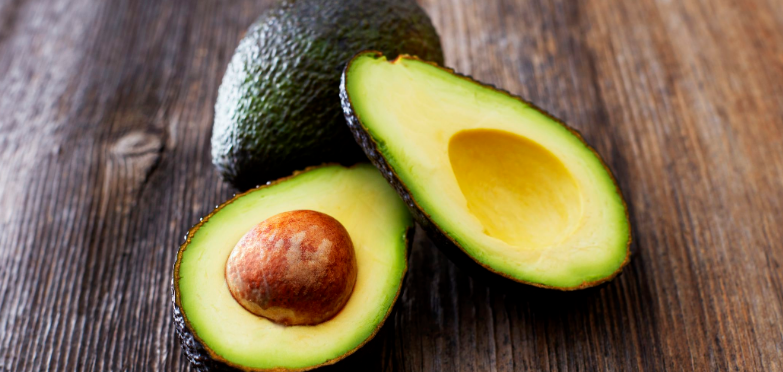
Avocados are the fruit that never quits when it comes to nutrition. They’re packed with tons of beneficial polyunsaturated fats, or healthy fats (18), which make them a great choice for anyone.
They’re especially helpful at lowering blood sugar (19), because of their potent nutrition property and their ability to satiate people faster than many foods (20). When carbohydrate foods were replaced with avocados in an NIH study (21), they found that overweight participants improved their lipoprotein levels as well as their glycemic index.
Summary: Avocados are packed with nutrition, including healthy polyunsaturated fats. They help increase satiety and contain a unique nutrient profile that have been shown to lower glycemic index and even improve lipoprotein levels.
6. Certain Types of Fish
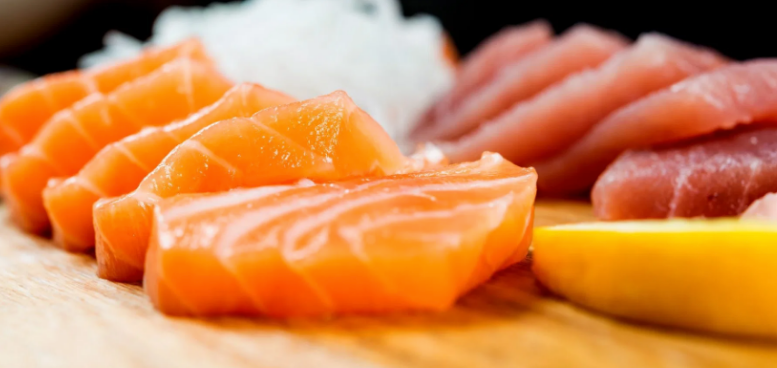
The best types of fish to include to lower blood sugar levels are salmon, white fish, mackerel, and sardines (22, 23). This is because they’re considered cold-water fish, low in mercury and high in tons of beneficial omega 3 fatty acids (24, 25). Tuna is also another good one to add to a healthy diet, but since it’s higher in mercury, it should not be consumed daily (26). Try to stay away from larger fish like swordfish because they’re extremely high in mercury (27, 28).
Fish are naturally high in iodine, zinc, B vitamins, iron, potassium, magnesium, and calcium as well (29, 30, 31). They’re a simple addition for a quick dinner. Fish are extremely easy to cook, taking only 6-10 minutes depending on the method.
Summary: Omega-3 fatty acids found in fish can help lower blood sugar levels. The best to consume are cold-water, low mercury types such as salmon, white fish, mackerel, and sardines. Fish also contains iodine, zinc, B vitamins, potassium, magnesium, and calcium, making it a highly nutritious choice.
7. Garlic and Onion
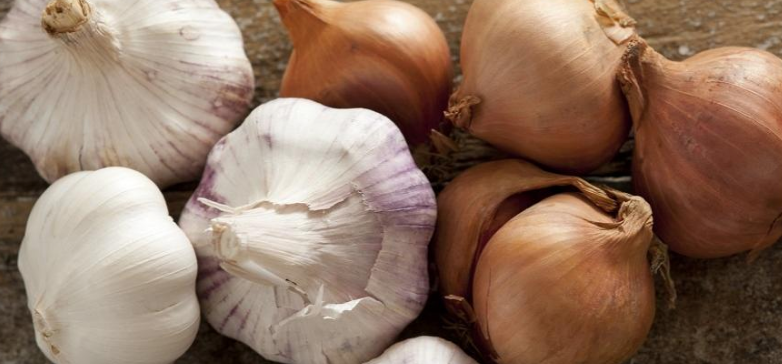
Garlic and onion are two of the most gut-friendly and healing herbs on the planet (32, 33, 34). In one study (35), the combination of these two along with cinnamon leaf, fenugreek seed, and walnut leaf was found to not only lower blood sugar levels but turned out to be an effective method in controlling blood glucose levels.
Don’t be afraid to cook with more garlic and onion than a recipe suggests, especially if you’re a fan of the flavor punch they both add. Always aim to get fresh onion and garlic whenever you can. Seasonings with garlic and onion are always a helpful addition, but eating them in their natural, untouched state is the best for optimal health and well-being (36, 37).
Summary: Incorporating more garlic and onion is highly beneficial to help lower blood sugar and maintain blood glucose levels. Adding in fresh garlic and onion is best for optimal health, but using seasonings with the two is also helpful.
8. Sweet Potatoes

Sweet potatoes are high in vitamin A, C, fiber, protein, and more (38, 39, 40). It’s a great idea to swap out white potatoes for those who struggle with high blood sugar levels for several reasons. They’re not only highly nutritious, but they’ve been proven to improve insulin sensitivity, too. (41)
Let your creativity shine when adding sweet potatoes to your diet. You can cut them into fry-size pieces to bake. Simply drizzle olive oil and garlic powder and/or salt and pepper for a great treat. You can also slice them thin and toast them as if they were a piece of bread.
Summary: Sweet potatoes contain vitamins A and C, fiber, protein, and much more. Their unique nutrient profile has been shown to improve insulin sensitivity, which helps lower blood sugar. They are highly nutritious and easy to bake, sauté, or even slice and toast in place of bread.
9. Cherries
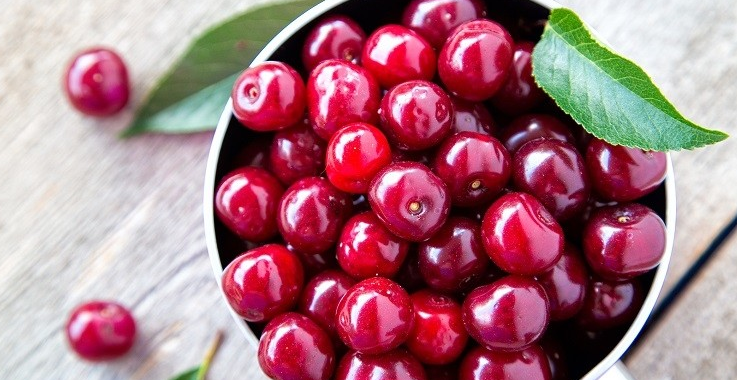
Cherries have a lower glycemic index than other fruits, so they can help to lower blood sugar levels instead of raising them (42, 43). Eating cherries can have a positive effect on those with diabetes and even obesity (44). They also help improve muscle soreness (45), so they’re a great thing to add to smoothies or even to snack on after a workout. They improve muscle soreness because they’re loaded with anti-inflammatory properties (46). The best cherries to choose are tart because they have the highest number of antioxidants (47, 48).
They’re loaded with tons of beneficial nutrients as well. They can help to improve symptoms from arthritis, and they even improve sleep quality (49, 50, 51). This is because cherries are a natural source of melatonin (52). Melatonin is naturally released when it’s time to sleep, but it can be overtaken by cortisol (53). If you struggle with high blood sugar and falling asleep, try some cherries.
Summary: Cherries, especially tart cherries, are a low glycemic index fruit that helps lower blood sugar, reduce muscle soreness and arthritis pain, and improve sleep. They contain anti-inflammatory properties, antioxidants, melatonin, and many other nutrients that help manage blood sugar and improve overall health.
10. Cacao
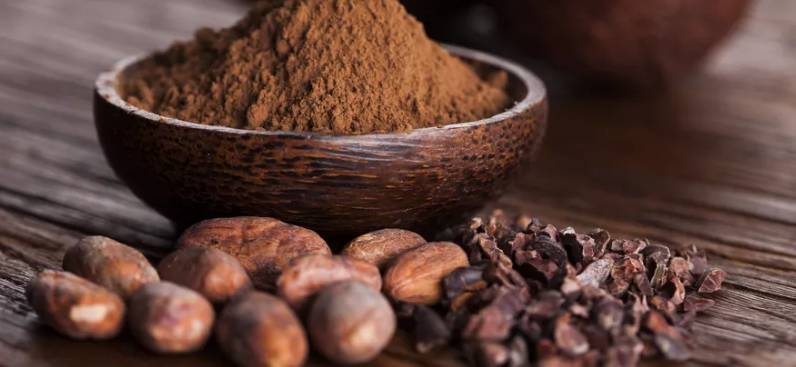
Cacao is the natural form of chocolate, unsweetened and raw. Due to the high number of antioxidants, cacao is a great alternative to sweetened chocolate if you struggle with high blood sugar (54, 55). Cacao is easy to include in homemade pudding, smoothies, oatmeal, and even in chip form. Raw cacao nibs can go into muffins, cakes, pancakes, waffles, and more for a healthier alternative.
Raw cacao has 40 times the antioxidants as blueberries and it’s one of the highest sources of plant-based iron (56, 57). It’s also full of magnesium, which helps with heart and brain health (58). Grab some raw cacao to get more calcium than cow’s milk and a natural mood stabilizer (59, 60). Cacao and traditional cocoa are different. They have diverse properties and health factors. Raw cacao is the purest form of chocolate, so it contains the most antioxidants (61), and therefore, health benefits. You can still enjoy cocoa from time to time, too. Aim for cocoa that is higher than 50% dark for the most health benefits (62).
Summary: Cacao is the unsweetened, raw, and natural form of chocolate. It contains high amounts of antioxidants, iron, magnesium, and calcium. Cacao contains more antioxidants and health properties than traditional cocoa. The high nutrient profile of cacao helps to reduce blood sugar, improve heart and brain health, and is even a natural mood stabilizer.
Conclusion
There are many types of foods you can add to your diet to stay healthy and keep your blood sugar levels down. But, if you suffer from diabetes, the only way to ensure your blood glucose levels stay down is with plenty of heart-healthy exercise and medication. Speak with your doctor about making a lifestyle change and adding some of these nutritious powerhouse foods to your diet.


